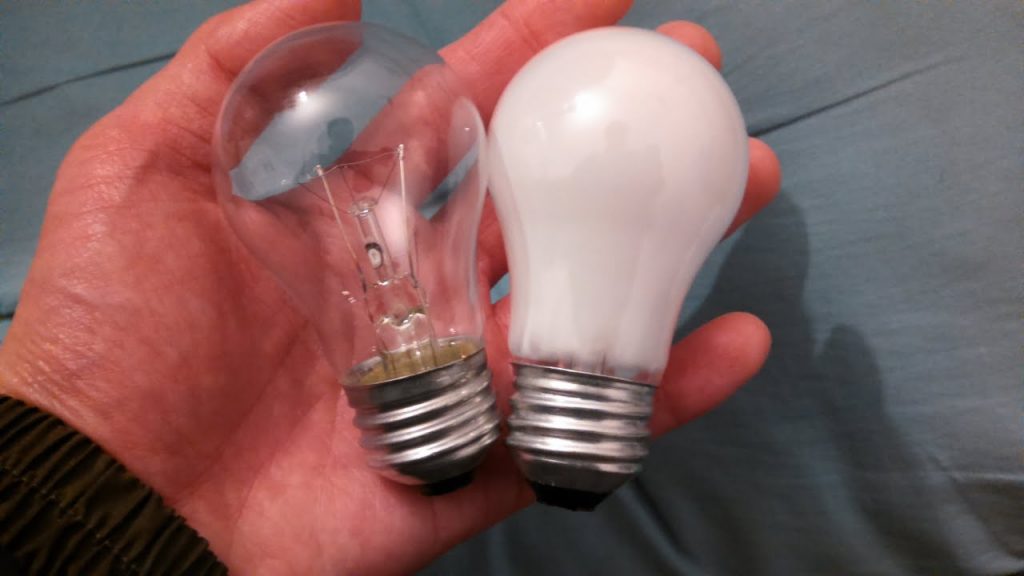Frosted Flakes? Or a Bright Idea?

The name Marvin Pipkin is hardly a household name, but if you’re inside right now, there’s a very good chance that his invention is there with you. Born in 1889, Pipkin was a chemical engineer by training who earned a doctorate in chemistry from Case Western University in 1917. He joined the U.S. Army shortly thereafter; World War I was raging in Europe and chemical weapons were putting the lives of American soldiers in danger. Pipkin was assigned to the Gas Defense Department, which was tasked with finding ways to make gas masks more effective. The Gas Defense Department was located at General Electric’s (“GE”) campus in Cleveland, Ohio, and when the war ended a year later, Pipkin remained with GE, where he’d spend his entire professional career.
Like many GE researchers at the time, Pipkin moved to the light bulb team shortly after joining the company. And the lightbulbs of the early 1920s definitely needed a lot of improvement. For example, today, there are both clear and frosted lightbulbs, as seen above. The clear lightbulbs give off a sharper, brighter light, which is great if you’re hoping to light a large area and doing so from a distance. But it’s not suitable for all uses — for example, if you’re reading in bed, a clear bulb positioned too close to your book will cause your eyes to squint, making reading all but impossible. Frosted bulbs, like the one above-right, fix that problem — the frosted glass diffuses the light and “softens” it.
In 1920, GE started producing frosted bulbs. The process was very simple: they simply etched the outside of the glass. Unfortunately, that process weakened the glass; early frosted bulbs were brittle and would break easily, both in transportation and in installation. GE light bulb experts looked for ways around that, exploring ways to strengthen the glass, experimenting with new etching processes, and — the holy grail of frosted lightbulbs — looking for ways to frost the bulb on the inside. After a few years of trial and error, the first two avenues seemed possible. But the idea of internally-frosted lightbulbs proved impossible and became a bit of an inside joke among those in the research lab.
It didn’t take long for this impossible task to turn into a hazing ritual of sorts. As the Iona Register recounted two decades later, “old-timers at General Electric used to play [a joke] on new engineers. Invariably these novices were assigned the ‘impossible’ job of frosting light bulbs from the inside.” When Pipkin joined the light bulb team in 1925, he became the next victim of the ruse. But unlike the young chemists who preceded him, Pipkin didn’t realize it was a joke. Per the Register, ‘he actually took the stunt seriously and set out in dead earnest to find out how to this inside frosting stuff.”
To the surprise of everyone but perhaps himself, he solved the problem, As the Schenectady Museum recounts, Pipkin ” first started with the method used by many of the scientists before him – spraying acid inside the bulb to etch its interior,” which gave the desired frosting effect but also created many weak spots on the glass, which, of course, renders the bulb useless. Other researchers “erroneously concluded that a second application of acid to the inside would merely weaken the bulb even further,” but Pipkin disagreed; he found another type of acid that, when used for that second application, strengthened the weak spots while maintaining the frosting effect he was after. Per the Museum, “despite the odds and to the astonishment of his fellow employees, hit upon the solution after several weeks of trial and error.”
Pipkin’s bosses had sent him on a fool’s errand, but he took it seriously — and made them look foolish. They didn’t mind, though; Pipkin and GE patented the invention and, for a while, were the exclusive manufacturer of lightbulbs with interior frosting, all because someone wanted to play a joke on the new guy.
Bonus fact: Apparently, the U.S. Supreme Court didn’t think Pipkin’s task was a fool’s errand either — in fact, the Court believed his discovery was not a big deal at all. In 1945 — two decades after Pipkin invented the impossible lightbulb — the Supreme Court heard arguments by a competing lightbulb manufacturer that was hoping to invalidate GE’s and Pipkin’s patent on the frosted bulb. The Court ruled against Pipkin and GE, finding that the process had been used on other surfaces and therefore, Pipkin’s invention wasn’t sufficiently original to warrant patent protection.
From the Archives: Not a Bright Idea: Another 1920s lightbulb story.
